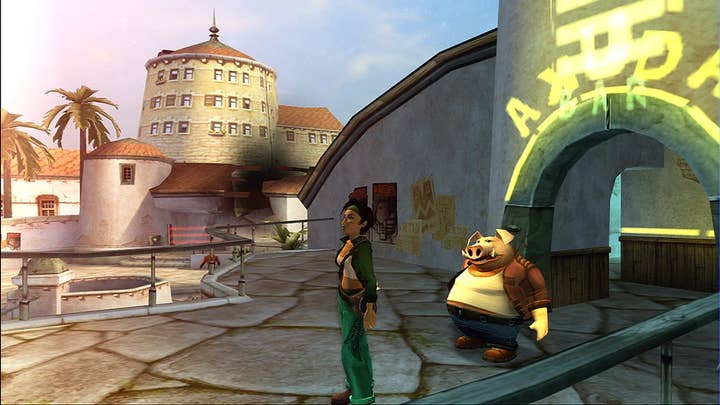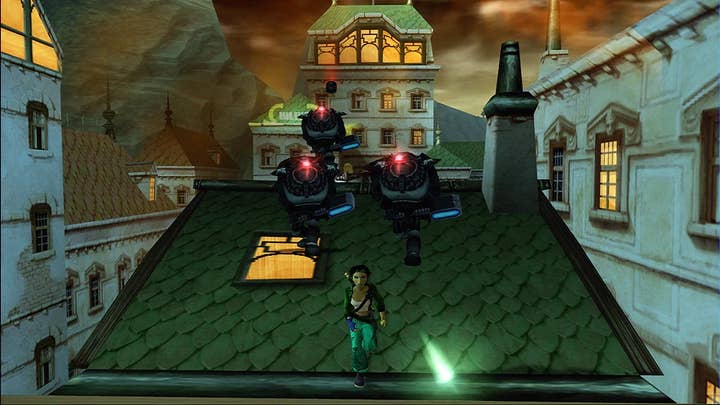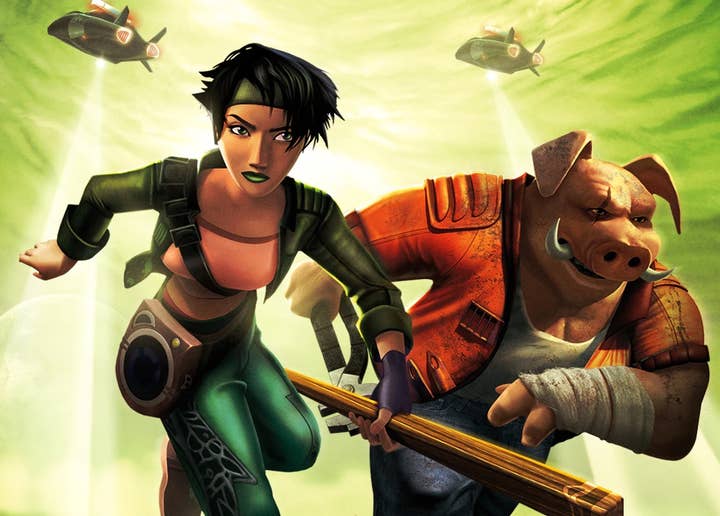Beyond Good & Evil | Why I Love
Thunderful game director Ulf Hartelius looked back to Ubisoft's 2003 adventure for inspiration when making The Gunk
Why I Love is a series of guest editorials on GamesIndustry.biz intended to showcase the ways in which game developers appreciate each other's work. This entry was contributed by game director Ulf Hartelius from Thunderful Development, which has just released its story-driven sci-fi exploration title The Gunk as an Xbox and PC exclusive.
I've spent a lot of time thinking about alien worlds in recent years as I've been hard at work with my colleagues at Thunderful Development building the world of The Gunk. There's one such world that's endured in my mind as a shining example of how to create a strange but believable place with characters that you care about. I'm talking about 2003's Beyond Good & Evil, one of my all-time favourite games.
As it's from a developer that's also based in Europe, I've always loved the way that its vision of another world feels like one filtered through the lens of the culture in which it's created. Its French background shines through in terrific ways, especially via the tradition of classic Franco-Belgian comics. You see it in Beyond Good & Evil's fondness for absurdity, in a pluralism that manifests in myriad characters and musical styles that nevertheless work in harmony to create a world that's unusual yet coherent.

It's a world that carefully balances scale and detail. A semi-open-world structure lets you wander the city with freedom, creating a sense of scale enhanced by the backstories of characters, relations, and world events that give a sense of a bigger place existing outside your field of view. Yet it also pays attention to the little things, packed as it is of nooks and crannies that can be found around the lagoon with your boat and in the city for players who take the time to explore all it has to offer.
"Using the camera puts you into a first-person perspective, forcing you to slow down and look at the world through a different lens -- literally and figuratively"
That desire to reward the player who wants to look closer is perhaps nowhere better realised than in the game's digital camera, a device for you to learn about flora and fauna in the world. Using the camera puts you into a first-person perspective, forcing you to slow down and look at the world through a different lens -- literally and figuratively. This fits the game's story theme of the authorities covering up reality with their own version of it perfectly, and is a great way of showing players that their engagement with the world matters.
Speaking of your engagement with the world mattering, I always found the way the world of Beyond Good & Evil changes over time really powerful. As the story progresses because of your actions as a player, the city and the lagoon change to reflect that. Again, this makes you feel like what you do is important. The world is responsive to narrative events and your part in them, drawing a connection between story and environment that I've always found intensely compelling.
The desire to make a world that responds to players' actions was a big influence in creating The Gunk. We also aimed to create a world that changes before your eyes as a planet's ecosystem springs into life in direct response to your actions removing the gunk. In addition, we have our own version of Beyond Good & Evil's camera in the form of the scanner, a device that rewards players who want to dig into the world by filling up their log-book with cool extra details on their discoveries.
Of course, a world is nothing without compelling characters to inhabit it and Beyond Good & Evil nails that, too. Jade is a fantastic protagonist -- not really an action hero, but someone who fights when she's forced to. Her default reaction is never to clobber someone, but to use her brains to deal with whatever conundrum she is faced with.

What I really think makes Jade work, however, is that she has other great characters to bounce off of, including her beloved boar-like friend Pey'j. There are some good cutscenes in the game, but what I remember most fondly is the more incidental chatter between characters. It's those little moments that build the relationships and your sense of each individual and, as a result, got you as a player invested.
This is an aspect of Beyond Good & Evil that I think is often overlooked. While it was far from the only "sidekick" game around that era -- there was Jak & Daxter, Ratchet & Clank and so on -- it took an approach to those buddy-style relationships that was more sophisticated. Behind the veneer of the cartoony style, you find far more serious themes, balancing gags with a level of maturity in a move that wouldn't be picked up and built upon until many years later with the likes of The Last of Us and the God of War reboot.
Again, you'll see some of that influence in The Gunk. Rani is, like Jade, not an action hero looking for a fight but someone that uses the tools she has in practical ways, like grabbing small enemies with her power glove as she does with large seeds and other objects she can interact with in the environment. We felt that she needed to have someone to bounce off of, like in Beyond Good & Evil, which is one of the reasons we filled the game with radio banter with Rani's partner, Becks. We think that this ongoing relationship is one of the game's key strengths, adding depth and atmosphere.
In a fast-paced industry like ours, it's tempting to always look to the latest titles when you're searching for inspiration. There is value in doing that, but we shouldn't neglect what older games can teach us either.
The key principles behind the building of Beyond Good & Evil's world -- its balance of breadth and detail, its dynamism, its responsiveness to player inquisitiveness -- are still worthwhile. The same goes for its character building, the way it blends levity with weightier themes, the way it uses the relationships between characters to build a sense of those individuals and your bond with them as a player. I hope this is something players will find in The Gunk and the many games of ours to come.
Developers interested in contributing their own Why I Love column are encouraged to reach out to us at news@gamesindustry.biz.
